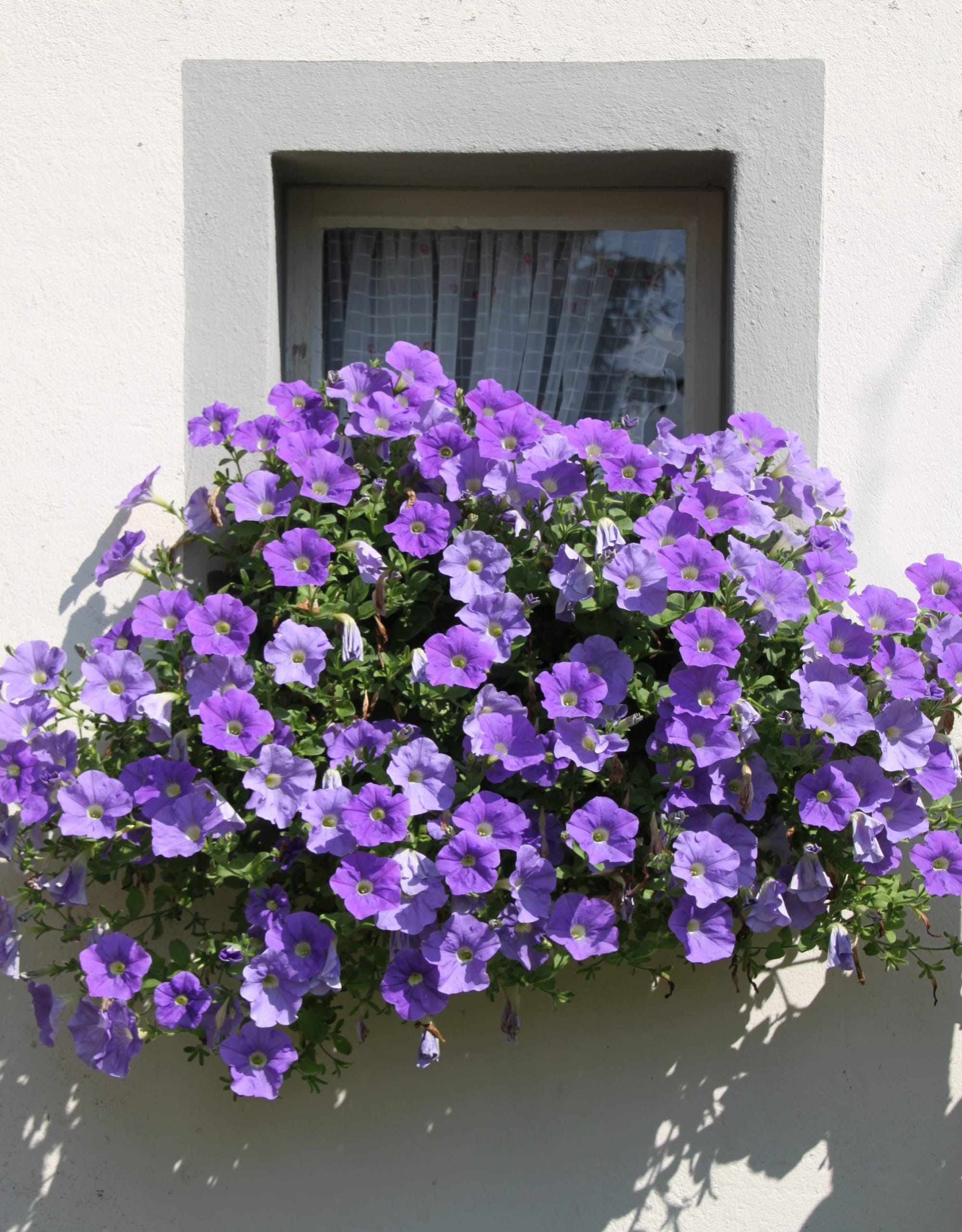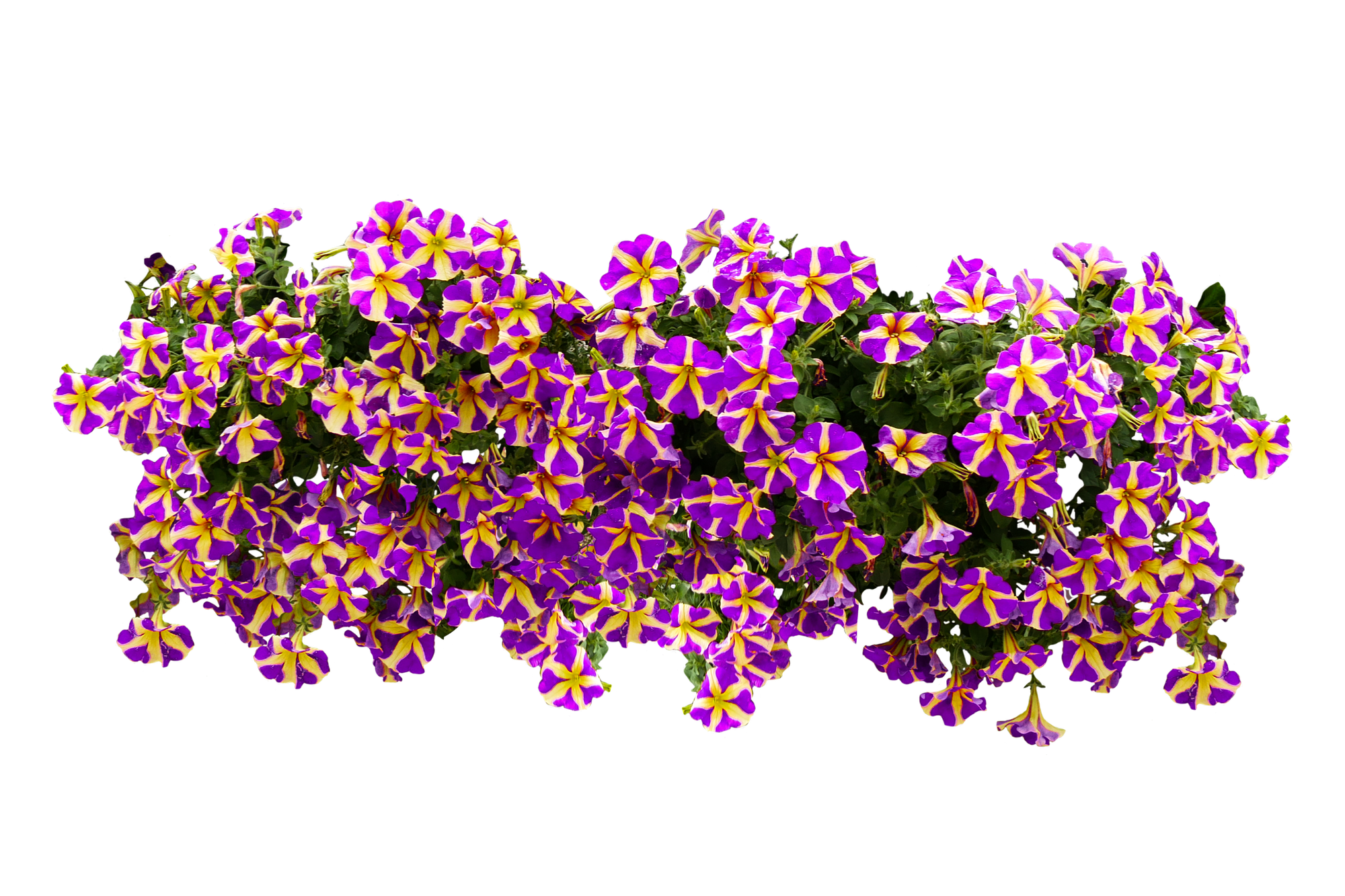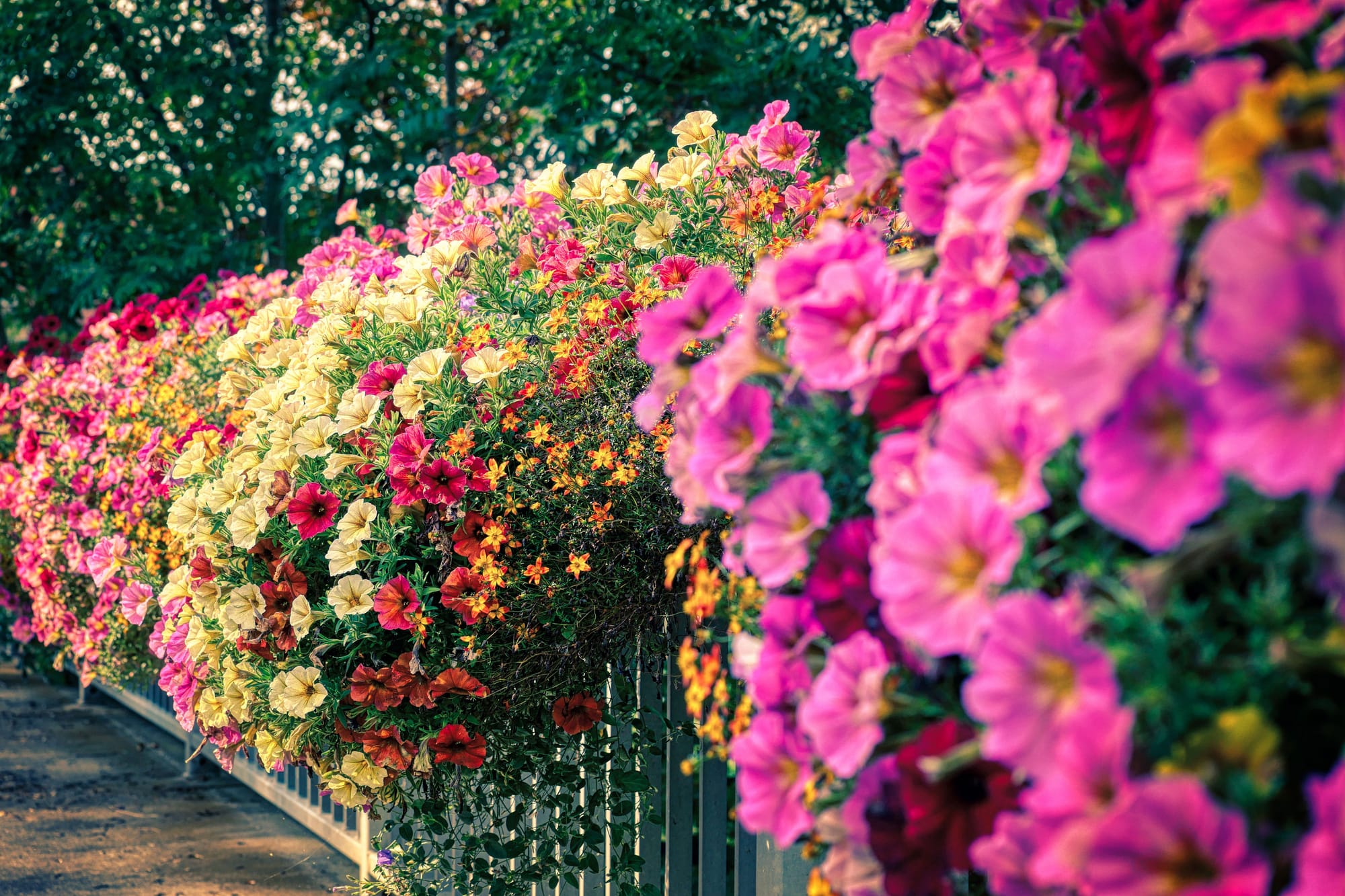Growing Unique Varieties of Petunias from Seeds

If you're not too concerned or particular about a certain color or type of petunia, it's probably easier to grab these as plants at your local garden center. But if there's a type of petunia you absolutely love, or you want a variety or color that can't be found locally, you won't believe how easy it is to grow them yourself from seeds. When planting seeds, there's no need to waste an entire packet of seeds. You can pull out the exact number of seeds to correspond with the number of plants you want. Then maybe throw in an extra seed or two just in case. If you find a poor germination rate, you'll know within about two weeks or so, then you can add more seeds to make up the difference. Generally, you should get a high germination rate with fresh seeds from a reputable seller. Shortly after they germinate, you might be wondering how this is ever going to work because the seeds and plants are very small. But they grow fast and before you know it, you have full-sized blooming plants.
In 2.5 - 3 months, you should have blooming plants. If you're in a mild climate or able to bring your potted petunias indoors, you can extend the blooming season indefinitely by removing dead plants and adding new seeds to fill in those lost plants. Petunias generally need fertilized regularly to maintain all the heavy blooming, so don't forget about that part.
There's a reason these are a workhorse flower that's been around for ages. They have a lot of flowers and are super easy to grow and maintain. If you're turned off by the fact petunias are so common, this is a good reason to buy special varieties as seeds to get something your neighbor for sure won't have.

Here are some hints for growing petunias from seeds.
NOTE: Petunia seeds should NOT be covered with soil as they need light to germinate. The soil used should be “fine” so the seeds stay on the surface of the growing medium. Simply lightly press them on to the soil so they stay in place without blowing away. Failure to plant these correctly may mean either poor germination or no germination.
Petunia seeds are often very small and difficult to work with. There are pelleted versions that make the process much easier. (The pellet is made of a type of clay that dissolves in water, revealing the seed.) The first few weeks as the tiny seeds germinate into tiny seedlings, they are very fragile so they need extra care.
I recommend starting petunia seeds indoors with a seed tray and clear plastic dome. (Such as Jiffy peat pots or a regular seed tray filled with peat moss.) This allows you to keep the seeds humid without drying either the air or the soil while they are germinating. Plant your seeds one by one into seed start pots or seed trays. Once the seeds germinate and develop into larger plants, you can transplant outdoors. (Make sure you harden indoor grown plants before transplanting so they don’t go into shock during transplanting!)
-When sowed, mist these seeds with a water spray bottle so they are damp without being overwhelmed by a stronger watering source (such as a faucet or garden hose). Keep them moist but not overwatered and avoid the soil drying out.

-Look into buying seed warming mats. Use these to just get your indoor seeds to germinate. Then remove from the heating mat immediately after they germinate. If you keep the seeds on the warming mat after they have germinated, the plants could dry out or burn. You can buy these on Amazon.com.
You can use a pointed object like a toothpick, needle or exacto knife to separate the seeds. I sometimes touch a seed with the end of my index finger and the seeds will attach just long enough to move them to the planting area or seed tray. Just make sure you have a sheet of paper under your finger when moving seeds around to catch in case they fall.
-You can fold a piece of paper in half and place your seeds on there. Then you can easily pour any extras back into your seed package when done. It’s also easier to see the individual seeds on a white background.
-I’ve also heard of people keeping toothpicks in their mouths. Then removing the moistened toothpicks and touching seeds, which grabs ahold of the seeds, then gently tapping, allowing them to be dropped in place.
A simple way to start your petunias is to fill a large pot or hanging basket with rich soil (fine soil since course soil is more difficult to germinate these seeds). A top layer of peat moss works well. Then cover the top of the pot with plastic wrap to help seal in the moisture. Be careful not to plant too many seeds in one pot to avoid wasting plants. You can leave them in your main pot or transplant seedlings into individual pots once they have 2-3 true leaves. Lift out individual plants with a wooden stick or butter knife, and transplant them into potting soil.
